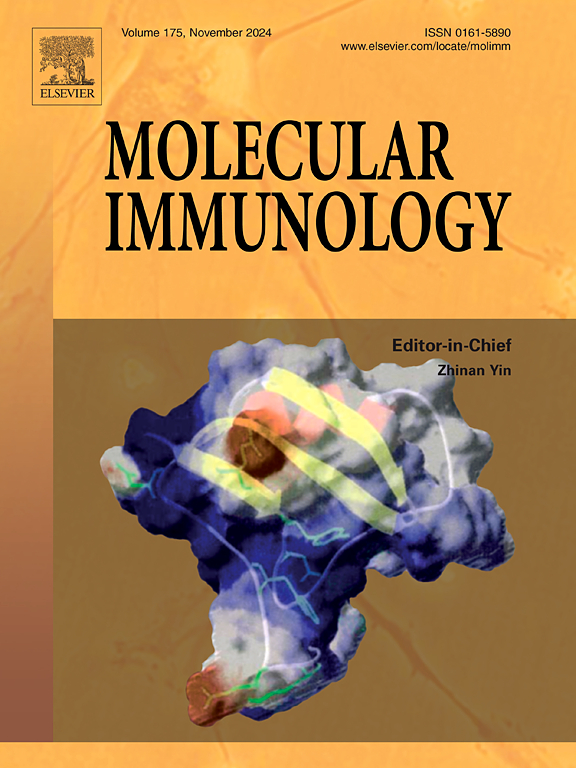Caveolin-1 protects against liver injury and lipid accumulation in alcoholic fatty liver via ferroptosis resistance
IF 3.2
3区 医学
Q2 BIOCHEMISTRY & MOLECULAR BIOLOGY
引用次数: 0
Abstract
Alcoholic fatty liver (AFL) is one of the most common chronic liver diseases globally with complex and controversial pathogenesis. Recent evidence suggests that iron overload and lipid peroxidation are risk factors for AFL. Caveolin-1 (CAV1) is an important signal platform that can maintain lipid homeostasis during the development of non-alcoholic fatty liver. Here, we studied the effect of CAV1 on ferroptosis in AFL. The AFL mouse model was established by chronic-plus-binge alcohol feeding. In vitro, AML-12 cells were incubated with ethanol and oleic acid for 48 h. We found alcohol-induced AFL triggered ferroptosis and decreased CAV1 expression. Overexpression of CAV1 by CAV1 scaffolding domain peptides (CSD) attenuated liver injury and hepatic steatosis, as well as inhibited ferroptosis in AFL mice. Additionally, the effects of CAV1 on ferroptosis-related protein levels (such as SLC7A11, GPX4, and ACSL4) and lipid accumulation were reversed by its small interfering RNA administration. Ferroptosis agonist (Erastin) treatment abrogated CAV1 plasmid-mediated ferroptosis resistance and steatosis alleviation. Collectively, the results revealed a crucial role of CAV1 in preventing hepatic steatosis and ferroptosis in alcohol-induced liver injury, which may identify potential targets for the treatment of AFL.
小窝蛋白-1通过抵抗铁下垂保护酒精性脂肪肝免受肝损伤和脂质积累
酒精性脂肪肝(AFL)是全球最常见的慢性肝病之一,其发病机制复杂且有争议。最近的证据表明,铁超载和脂质过氧化是AFL的危险因素。Caveolin-1 (CAV1)是非酒精性脂肪肝发展过程中维持脂质稳态的重要信号平台。我们研究了CAV1在AFL中对铁下垂的影响。采用慢性加暴饮酒精喂养法建立AFL小鼠模型。在体外,AML-12细胞与乙醇和油酸孵育48 h。我们发现酒精诱导的AFL触发铁下垂并降低CAV1的表达。通过CAV1支架结构域肽(CSD)过表达CAV1可减轻AFL小鼠的肝损伤和肝脂肪变性,并抑制铁下垂。此外,CAV1对铁中毒相关蛋白水平(如SLC7A11、GPX4和ACSL4)和脂质积累的影响通过其小干扰RNA被逆转。铁下垂激动剂(Erastin)治疗消除了CAV1质粒介导的铁下垂抗性和脂肪变性减轻。总之,这些结果揭示了CAV1在预防酒精性肝损伤中的肝脂肪变性和铁下垂中的关键作用,这可能为AFL的治疗找到潜在的靶点。
本文章由计算机程序翻译,如有差异,请以英文原文为准。
求助全文
约1分钟内获得全文
求助全文
来源期刊

Molecular immunology
医学-免疫学
CiteScore
6.90
自引率
2.80%
发文量
324
审稿时长
50 days
期刊介绍:
Molecular Immunology publishes original articles, reviews and commentaries on all areas of immunology, with a particular focus on description of cellular, biochemical or genetic mechanisms underlying immunological phenomena. Studies on all model organisms, from invertebrates to humans, are suitable. Examples include, but are not restricted to:
Infection, autoimmunity, transplantation, immunodeficiencies, inflammation and tumor immunology
Mechanisms of induction, regulation and termination of innate and adaptive immunity
Intercellular communication, cooperation and regulation
Intracellular mechanisms of immunity (endocytosis, protein trafficking, pathogen recognition, antigen presentation, etc)
Mechanisms of action of the cells and molecules of the immune system
Structural analysis
Development of the immune system
Comparative immunology and evolution of the immune system
"Omics" studies and bioinformatics
Vaccines, biotechnology and therapeutic manipulation of the immune system (therapeutic antibodies, cytokines, cellular therapies, etc)
Technical developments.
 求助内容:
求助内容: 应助结果提醒方式:
应助结果提醒方式:


